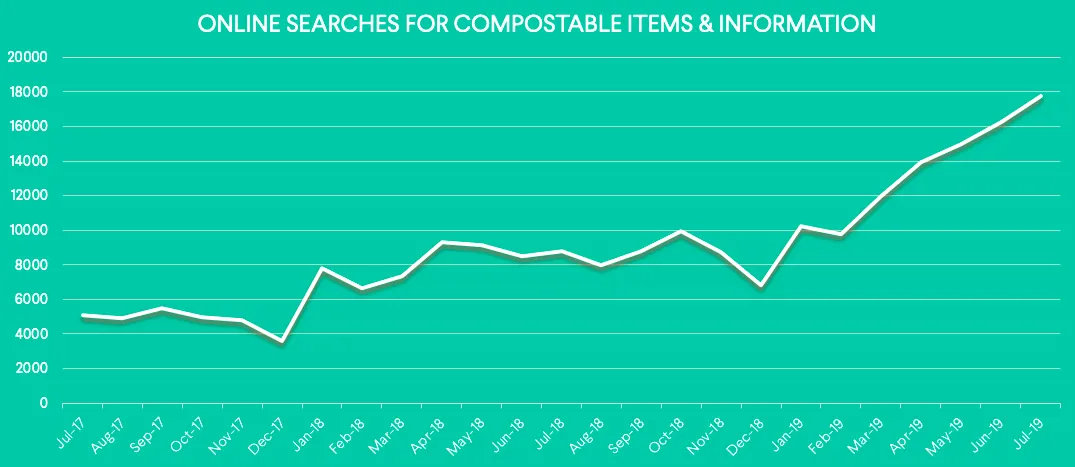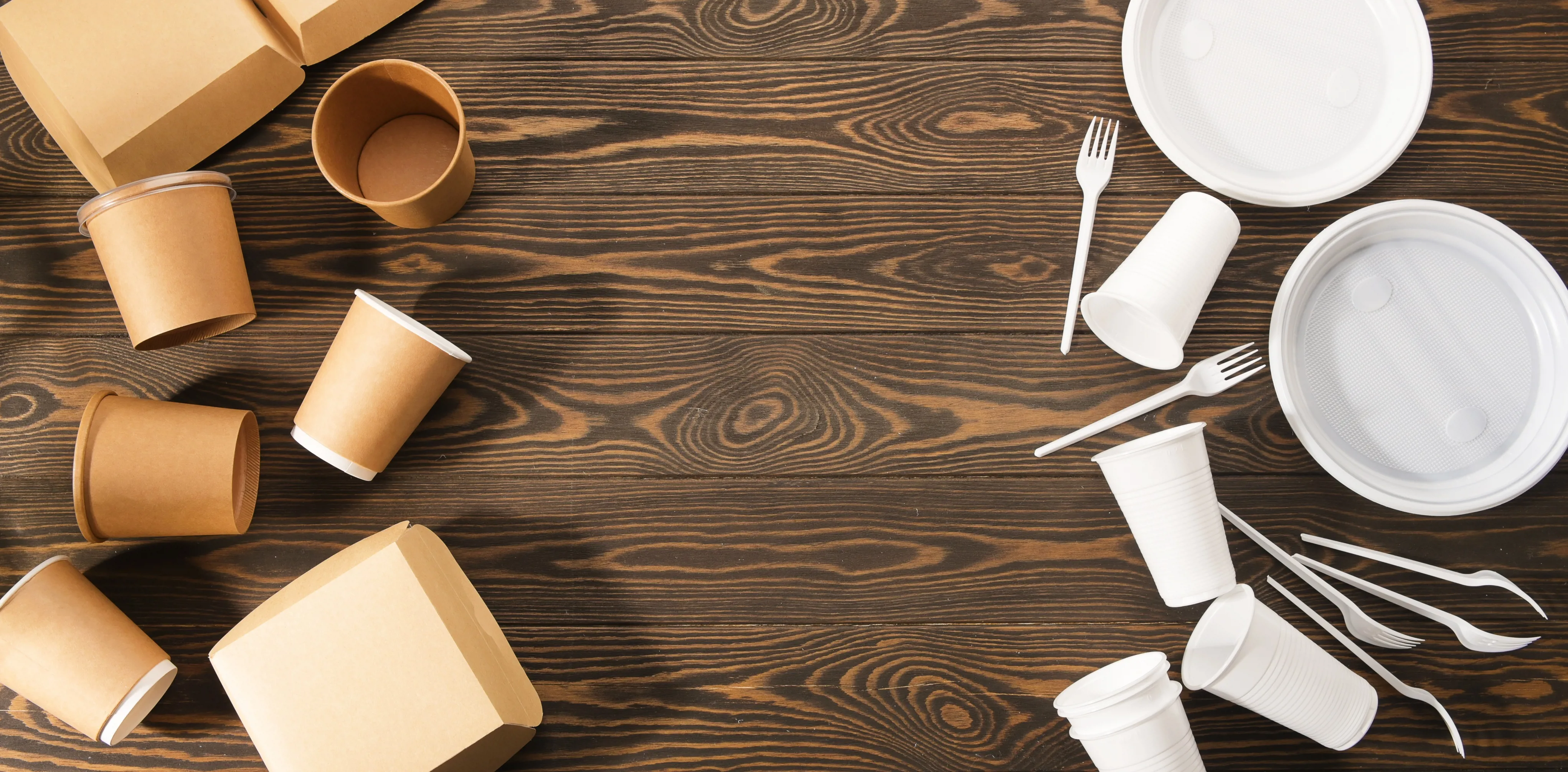The past couple of years has seen the ‘war on plastic’ take off. We’re all more educated about the detrimental effects of this material on our planet, and as a consequence, public interest in sustainable alternatives to everyday items has increased.
A quick look at Google’s data reveals a sharp increase in search demand for terms relating to compostable materials in the past two years. Amongst the most-searched-for are ‘compostable bags’, ‘compostable cups’ and ‘compostable plastic’. It shows not only a growth in public awareness, but also that consumers are actively looking for greener options.

Online searches related to compostable products
But whilst the increased interest by the public for compostable packaging is a positive change, there’s still a lot of misinformation out there. Unsurprisingly, searches for information on compostables and biodegradable have also increased, as people try to understand the differences between biodegradable and compostable as they try to choose the best option.
So let’s get one thing straight: biodegradables and compostables are not the same. They are made from different materials, through different processes and, most importantly, have a very different end-of-life from one another.
Compostable products
To be called compostable, packaging with this material must be certified, which means it was officially tested. Compostable plastics must decompose completely like organic matter in up to 180 days, leaving no toxic residue behind. Compostables are made from renewable resources and, once it breaks down, just like traditional organic waste in a compost environment, it works as a fertiliser.
Biodegradable materials
Biodegradables are made of petrochemicals-based materials modified to break down quickly by biological processes (microorganisms such as bacteria and fungi). However, they don’t necessarily include a timeframe for decomposition and don’t specify the conditions needed. Because of this, not all biodegradable products behave the same and biodegradable packaging often ends up in landfills where it can take years or even decades to break down, releasing toxic gases like carbon dioxide during this time.
One of the arguments often used by the industry is that some biodegradable products are photodegradable (break down when exposed to the sun) or oxo-degradable (reacts to oxygen to break down), and therefore they would be a green option. However, these types of biodegradable plastics serve to create a bigger problem as they break down into tiny pieces of plastic that never disappear and don’t offer any nutrients to the soil.
To make things worse, these microplastics will ultimately end up in the oceans, harming marine life and more often than not, entering our food chain. By now you probably got the message: from a sustainability perspective, there isn’t much point in biodegradable plastic.
(Don’t confuse biodegradables with “bioplastics”. These are made from natural materials such as corn starch and break down completely - so a much better option! We’ll come back to bioplastics in a future blogpost - stay tuned!)

Compostable vs Biodegradable
As you can see, in the fight of compostable vs biodegradable, the first is a safer and greener option. But hold on before splashing out on those green coffee cups - compostables are not that simple to get rid of after use either.
Most compostable items won’t break down in your home compost, and also can’t be disposed of with food. That’s because, although they’re able to decompose back into natural elements, they need special conditions - moisture, temperature, pressure and microorganisms. Home composts don’t meet these criteria - they’re ok to decompose the contents of your food waste bin or garden waste, but not compostable packaging items.
On that note, it’s also interesting to know that your food waste is taken to a different location than compostable waste, since they need different processes. While food breaks down by microorganisms at an approximate temperature of 37 degrees in a local Anaerobic Digester, compostable materials need to spend some time in an autoclave in high-pressure conditions and at temperatures of up to 166 degrees. The good part? Following this industrial composting process, both food and compostables end up fully recycled as fertilisers, and the green energy resulting from this process is used to heat houses in the UK.
Are compostables the answer?
Saying no to plastic is already on everybody’s mind, but we also need to be mindful of our alternatives. There is no simple answer. Yes, compostable packaging is a better alternative than conventional plastics for many everyday products - however, it needs to be recycled correctly (that means not in food waste, mixed recycling or general waste), but by a specialist compostable packaging recycling service.
Fortunately, First Mile offers just that! We’ve teamed up with Vegware to recycle compostable packaging in a safe and responsible way to ensure your green intentions are actually benefiting the planet.



